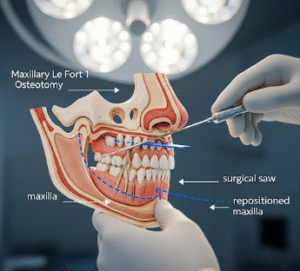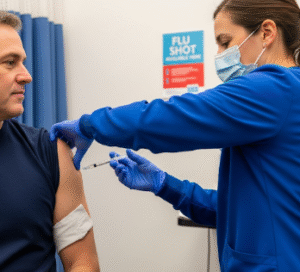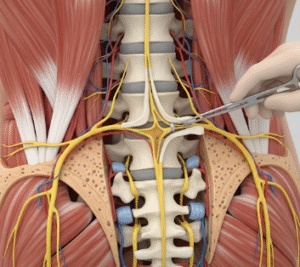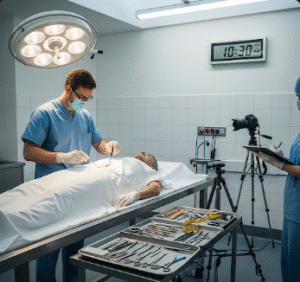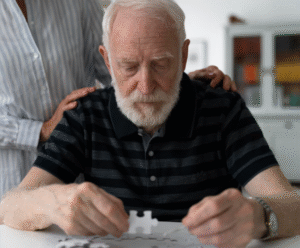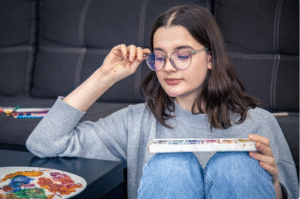Overview
Reverse shoulder replacement is a surgical procedure designed to restore shoulder function in patients with severe rotator cuff damage or arthritis. Unlike traditional shoulder replacement, this procedure reverses the ball-and-socket orientation, placing the ball on the shoulder blade (scapula) and the socket on the upper arm bone (humerus), improving leverage for the deltoid muscle to lift the arm.
South Korea is known for highly skilled orthopedic surgeons, advanced surgical technology, and comprehensive rehabilitation programs, ensuring reverse shoulder replacement is both safe and effective.
What is Reverse Shoulder Replacement?
This procedure involves replacing the damaged shoulder joint with a prosthesis in a reversed configuration. Key points include:
✔ Designed for patients with rotator cuff arthropathy or complex shoulder arthritis.
➔ Restores overhead arm movement even with deficient rotator cuff muscles.
● Improves shoulder stability and reduces pain.
★ Durable prosthetic implants provide long-term functional improvement.
It is recommended for patients with severe rotator cuff tear arthropathy, failed previous shoulder surgeries, or complex fractures of the shoulder joint.
What are the Benefits?
Reverse shoulder replacement offers several advantages:
✔ Significant pain relief for arthritic or injured shoulders.
➔ Restores arm mobility and functional range of motion.
● Improves strength via deltoid muscle leverage.
★ Durable, long-term solution with high patient satisfaction.
➤ Reduces dependence on medications or assistive devices.
Procedure Details
1) How should I prepare for Reverse Shoulder Replacement?
Preparation ensures safety and optimal outcomes:
✔ Medical evaluation: X-rays, MRI, or CT scans to assess bone quality and joint damage.
➔ Medication review: Adjust blood thinners and other relevant medications.
● Physical assessment: Evaluate preoperative range of motion and strength.
★ Preoperative counseling: Discuss procedure, expectations, risks, and rehabilitation plan.
➤ Anesthesia evaluation: Usually performed under general anesthesia, sometimes combined with regional nerve block.
2) What happens during the Reverse Shoulder Replacement procedure?
The procedure is performed in a surgical suite under sterile conditions:
✔ Incision: Typically a deltopectoral approach is used to access the shoulder joint.
➔ Joint preparation: Damaged humeral head and glenoid surfaces are removed.
● Implant placement: Ball component attached to scapula; socket attached to humerus.
★ Stability testing: Range of motion and joint stability assessed intraoperatively.
➤ Closure: Incision closed with sutures; dressing applied, sometimes with a drain.
✔ Procedure duration: Usually 1–2 hours depending on complexity.
Korean orthopedic surgeons emphasize precise implant positioning and soft tissue balancing to maximize function and reduce complications.
3) What happens after Reverse Shoulder Replacement?
Post-operative care focuses on pain management, shoulder protection, and gradual rehabilitation:
✔ Hospital stay: Usually 2–3 days; sometimes outpatient in select cases.
➔ Pain management: IV and oral analgesics; nerve block may be used.
● Immobilization: Shoulder sling used for 4–6 weeks to protect repair.
★ Physical therapy: Gradual passive and active-assisted range of motion exercises under supervision.
➤ Follow-up: Regular imaging and clinical assessment to monitor implant position and function.
Risks / Benefits
Possible Risks:
✔ Infection at the surgical site
➔ Shoulder dislocation or instability
● Nerve injury causing weakness or numbness
★ Prosthetic loosening or wear over time
➤ Fracture of the humerus or scapula
Major Benefits:
✔ Significant pain relief
➔ Restores functional range of motion and shoulder strength
● Minimally invasive techniques available in some centers
★ High long-term success and patient satisfaction rates
➤ Reduces dependence on medications and improves quality of life
Recovery and Outlook
✔ Immediate recovery: Pain and swelling monitored in hospital; sling for immobilization.
➔ Activity restriction: Avoid lifting or strenuous activity for 6–12 weeks.
● Physical therapy: Gradual strengthening and range of motion exercises over months.
★ Long-term outcome: Most patients regain significant shoulder function and experience minimal pain.
➤ Follow-up: Routine imaging and functional assessment; prosthesis typically lasts 10–15 years or longer.
When To Call the Doctor
Contact your doctor immediately if you notice:
✔ Fever, chills, or signs of infection
➔ Sudden or severe shoulder pain
● Unusual swelling or redness
★ Numbness, tingling, or weakness in the arm or hand
➤ Instability, dislocation, or inability to move the shoulder
Best Korea Option / Process
South Korea provides expert reverse shoulder replacement services with:
✔ Leading hospitals: Samsung Medical Center, Asan Medical Center, Severance Hospital Orthopedics.
➔ Experienced orthopedic surgeons specializing in shoulder arthroplasty and minimally invasive techniques.
● Advanced prosthetic implants and surgical technology for precision and durability.
★ Comprehensive rehabilitation programs to maximize post-op recovery and functional outcomes.
➤ Medical tourism support: Translation services, appointment coordination, and continuity of care for international patients.
✅ Highlights:
✔ Reverse shoulder replacement restores function in patients with severe rotator cuff or arthritic damage
➔ Improves range of motion, strength, and pain relief
● Minimally invasive options reduce recovery time
★ Risks include infection, dislocation, nerve injury, and prosthetic wear
➤ Korean hospitals provide expert surgeons, advanced implants, and comprehensive post-op care


